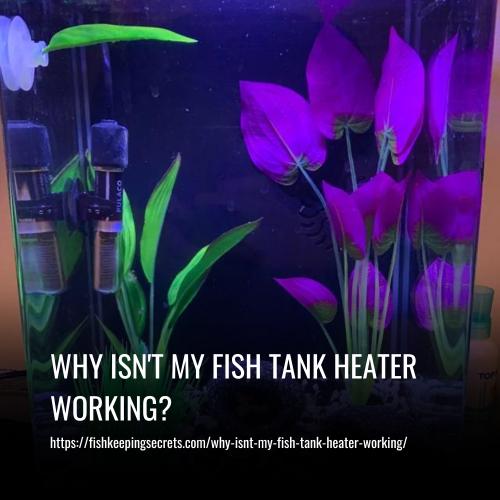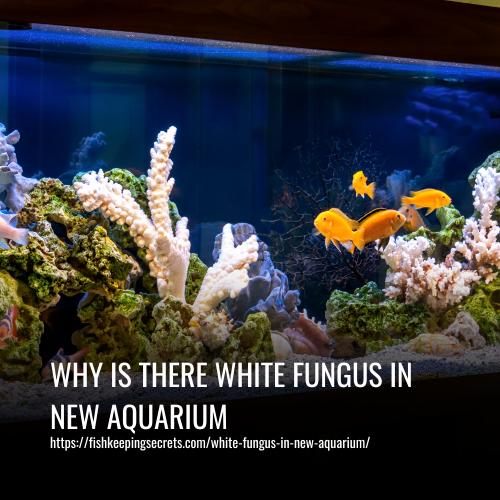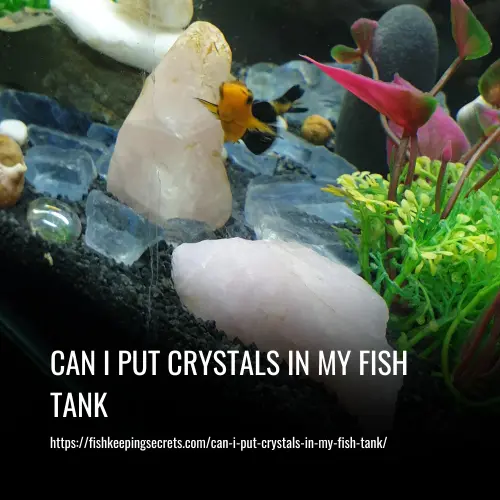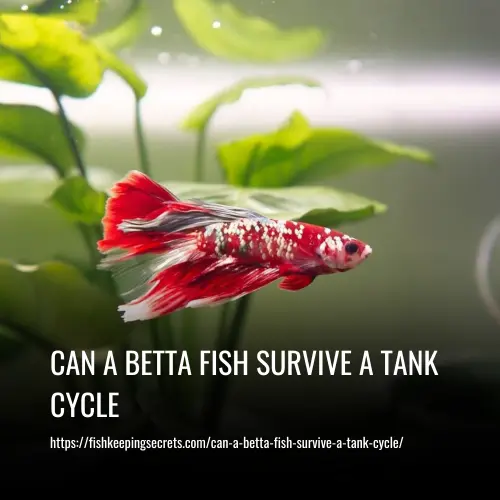How To Get More Oxygen In Fish Tank
This post contains affiliate links. As an Amazon Associate, we earn from qualifying purchases.
Every aquarium owner wants happy and healthy fish, but it’s not always easy to keep them that way. Poor water quality can make the level of oxygen in your tank dangerously low.
Low oxygen levels can be a huge problem for your fish, leading to an array of health issues including abnormal swimming behavior, respiratory issues, and even death.
To Get More Oxygen In Fish Tank, follow these steps:
- Pouring Water From A Height.
- Stir The Water Manually.
- Large water changes.
- Add ice and use fans.
- Use a battery-powered air pump.
- Use a Hang-on-Back Filter.
- Use a Spray Bar.
- Use a Wavemaker.
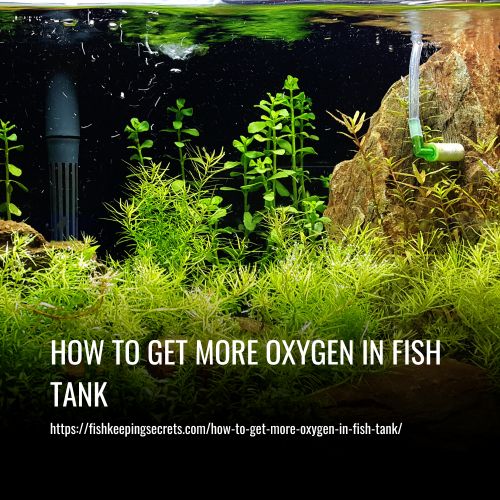
How to Increase Oxygen in Fish Tanks?
This is the perfect resource to help you figure out how to raise oxygen levels in your fish tank.In this article, I’m going to share how you can raise oxygen levels in your aquarium both in an emergency and long term.
Adding oxygen to a fish tank is essential for the health of your aquatic friends. Here are some easy ways to add more oxygen to your tank:
1. Pouring Water From A Height:
Introducing oxygen to an aquarium by pouring water from a higher height is an effective method of aeration.
Take a small container, fill it with some aquarium water and then slowly pour the contents from an elevated location – this will create movement within the tank which helps improve circulation in the tank.
By pouring water from a great height, you’ll not only be adding oxygen to your aquarium but also stimulating important movements and circulation. This increases oxygen flow, as well as encourages beneficial bacteria growth that helps keep the tank healthy. So don’t forget – when topping off your fish tank, remember to use this simple trick of pouring aquarium water from a higher level.
2. Stir The Water Manually:
If you’re looking for an effective way to introduce oxygen into your aquarium, then consider manually stirring the water. This simple step can create movement within the tank and allow more aeration to occur. It’s a great way to ensure that your fish get the oxygen they need while in captivity.
Additionally, stirring the water helps with distributing food particles throughout the tank which can help remove any debris or waste that may be hanging around. Not only will this keep your aquarium clean, but it also helps increase overall water quality. And if you have delicate plant life in the tank, it helps promote healthy root growth as well!
3. Large water changes:
Regular water changes are essential for the health of your aquarium and the organisms that live there. Doing large water changes can provide an added benefit, however, by injecting lots of fresh, oxygenated water into your tank.
Water changes of up to 50% will help ensure the highest level of quality in your tank. Such water should be replaced in its entirety with dechlorinated tap water or treated aquarium water.
4. Add ice and use fans:
If you’re looking to cool down your aquarium and replenish oxygen levels, add ice and use fans. Ice will help cool the water, but make sure it’s in a sealed pouch or bag so that it doesn’t melt directly into the tank and disrupt parameters. You can also place a fan near the top of your aquarium – not only will it cool the water, but it will also create currents on the surface of your tank that will help with oxygenation.
When adding ice or blowing a fan for increased O2 levels, be careful to monitor temperature levels. Keep track of changes in temperature by using a temperature sensor; by doing so you’ll ensure that your fish stay healthy and happy in their natural environment.
5. Use a battery-powered air pump:
When the power goes out, it can cause a lot of inconveniences—especially if you live in an area that’s prone to storms.
In case of a power outage, electricity connected to your tank will be disconnected unless you have a home generator. Therefore, using a battery-powered air pump may be an optimal choice.
With this air pump, you can keep the water flowing in your tank no matter what. It uses batteries to power up and create bubbles so your fish don’t run out of oxygen during a power outage. It’s lightweight and easy to use, meaning anyone in your household can hone their disaster preparedness skills while ensuring they always have fresh aquarium water.
6. Use a Hang-on-Back Filter:
Using a Hang-On Back (HOB) filter is an easy way to keep the oxygen levels in your tank at the optimal level. The filter hangs onto the back of your tank and takes in water from the bottom of it, then releases it back out at the top. This movement helps to aerate the water, which gives it that extra boost of oxygen needed to keep your fish healthy and happy.
The HOB filter doesn’t just keep oxygen levels up though, it also helps distribute the oxygen-rich water evenly throughout your tank. This means no more areas with low oxygen concentrations, so you can rest assured that all parts of your tank are getting enough oxygen!
As an alternative to a HOB filter, many hobbyists will add an air stone to their tanks as well. This little device creates lots of tiny bubbles that help increase dissolved oxygen levels and also make for an aesthetically pleasing effect too!
7. Use a Spray Bar:
Using a spray bar is one of the best ways to help aerate your tank and increase oxygen levels. Most aquarium canister filters come with a spray bar, making it easy to add this important device to your tank.
The spray bar circulates filter water across the top of the tank, promoting oxygenation. This helps make sure that your fish and other aquatic life are getting the oxygen they need to live their best lives!
8. Use a Wavemaker:
If you’re looking for a way to increase the oxygen levels in your fish tank without using a pump, then using a wavemaker is the perfect solution. This device helps break up the surface tension of the water, meaning it circulates throughout the tank more quickly. The movement of the wave allows air to mix with the aquarium water, resulting in vital gas exchange.
And you have full control over how quickly this process takes place: The wavemaker allows you to set a speed that won’t stress out your fish too much but will still be effective in oxygenating the water. So if you want to keep your fish healthy and happy, then make sure you use a wavemaker!
Adding Oxygen Without Electricity
If you’re looking for ways to add oxygen to your aquarium tank without electricity, then you’ve come to the right place. There are three different options that are perfect for adding oxygen to your tank without plugs or cords.
Use Solar Fountain Pumps.
The first is solar power fountain pumps. These work by harnessing the sun’s energy and converting it into an electric current that powers a pump that circulates the water in your tank. This helps to keep it oxygenated so that your fish can breathe easily.
Aquarium Plants
Adding oxygen to your fish tank without electricity is a great alternative for those looking for cost-effective options. Aquarium plants are the perfect option in this case. Not only are they aesthetically pleasing, but they also act as a natural filter, extracting carbon dioxide from the water and releasing oxygen into the water through photosynthesis. This process ensures a safe and natural habitat for the fish while providing oxygen levels that are at an adequate level.
When it comes to picking aquarium plants there are many options available. Some great all-rounder choices include; Water Wisteria, Dwarf Hair Grass, Java Fern, Fanwort, and Green Tiger Lotus. All these varieties are relatively easy to care for and can form a thick canopy of greenery in no time at all. In addition to adding some beauty to your tank, they make great companions for your pet fish too!
Add Oxygen Tablet
Adding oxygen tablets to your aquarium is one way to increase the levels of dissolved oxygen in the tank. They are made up primarily of hydrogen peroxide and other sodium compounds, and when these dissolve in water they release oxygen atoms as bubbles into the tank.
It’s important to note that these tablets are a temporary source of oxygen and should not be used as the sole source of oxygen for your fish. They can be used as an oxygen boost in tanks due to their rapid release and have no shelf life as long they are kept away from any moisture and at room temperature. Aeration systems are also frequently employed to produce oxygen for fish during transport.
Adding an oxygen tablet is an easy and effective way of increasing the amount of dissolved oxygen in your aquarium – making it healthier for the inhabitants!
Where Do Fish Get Their Oxygen From In The Tank?
The oxygen that fish need in a tank doesn’t come directly from the water, contrary to what many think. Instead, the primary source of oxygen in an aquarium is the air around it. That’s because oxygen atoms can’t be removed from hydrogen atoms – which are constantly bound together – and so your fish need a different way to access this essential gas.
Thankfully, gas exchange processes at the surface of the water allow for carbon dioxide (CO2) present in the tank to be exchanged with Oxygen (O2) in the air. This process makes having adequate aeration and even photosynthesis of plants beneficial if you want your fish to remain healthy since they’ll absorb more oxygen with these processes active!
How Much Oxygen Do The Fish In My Aquarium Need?
Oxygen is essential for the health and well-being of your fish, but it’s important to make sure you provide them with the correct dosage. The oxygen requirements can vary from species to species, however, there are some general guidelines that you should follow.
To keep your aquarium healthy, maintain an oxygen saturation level between 80-110%, and a dissolved oxygen level between 6-8 mg/l. Low levels of oxygen can be damaging to fish, so monitoring is essential.
It is advisable to avoid oversaturation in the aquarium as it can lead to air bubble disease in fish. Maintaining an appropriate oxygen level for your fish will promote their well-being.
What Causes Reef Tank Hypoxia?
Reef tank hypoxia is a condition caused by environmental factors that reduce the amount of oxygen present in the water. A few of the main causes for this include overstocking, elevated temperatures, low water flow, and excessive waste buildup.
When too many fish are kept in an aquarium, it can lead to low amounts of dissolved oxygen. Lack of water flow also contributes to this problem, as it should be aerating and oxygenating the tank every single day. Any build-up of excess organic matter such as food or other waste will lead to higher levels of ammonia and phosphate levels, both contributing to hypoxia.
Also, if your tank receives too little light over prolonged periods then live plants will actually use up some of the oxygen creating a state of imbalance. Finally, the addition of certain chemicals or medications may deplete any remaining oxygen levels even further.
How to know if your tank has a low oxygen level?
Knowing if your aquarium has a low oxygen level is essential to keeping your fish healthy and safe. There are several signs that can alert you when your tank’s oxygen levels are too low, so it’s important to keep an eye out for them.
One of the tell-tale signs of a tank with a low oxygen level is when the fishes come to the surface with their mouths wide open gasping for air. If all or most of the fish in your aquarium are doing this more frequently than usual, then it’s likely that you have an oxygen issue to address.
Other indicators include a decrease in swimming activity and energy among your fish, as well as decreased appetite among them. Additionally, labored breathing accompanied by rapid gill movement is another strong sign of low oxygen levels.
By being aware of these signs and taking action promptly, you can prevent serious health issues for your aquatic friends.
Fish Behaviour
Fish behavior could be a great indicator that something may be off. When oxygen levels in a tank get too low, fish will give some telltale signs. If you keep an eye out for these, you could prevent an emergency from happening.
One sign to look for is when the fish gasps for air at the water’s surface. If most of the fish are seen doing this frequently, then it’s time to check the oxygen levels in your tank!
But please note that there are some species of fish like betas and labyrinths that naturally spend time close to the water’s surface too, so it is important to tell the difference between natural behavior and distressed behavior.
How To Detect Signs To That The Tank has Too Much Oxygen?
Signs that indicate a high oxygen level in a fish tank can be used to confirm if adjustments are needed. One of these is cloudy eyes in your fish. The presence of CO2 in the water helps improve vision for the fish, so lack of it leads to cloudy eyes and weary swimming behavior.
Another sign to look out for is bloated fish. With too much oxygen, bubbles become trapped under their scales and cause them to swell up. Finally, hyperoxygenation can also cause unexplained death in the population of your aquarium, so take particular caution if you detect any patterned deaths.
By studying these signs and being aware of what’s happening in your aquarium, you’ll be able to quickly determine if your tank has a surplus amount of oxygen or not!
How To Reduce the Oxygen Content
If you’re looking for ways to reduce the oxygen content in your tank, you can start by adding more plants. Plants are great for consuming excess oxygen and helping to keep the levels under control. Additionally, you could install a bubbler near the surface of your tank, as well as fluorescent bulbs instead of LEDs, which will also release less heat.
Performing frequent water changes and installing a powerful water filter can also help to improve circulation and help to minimize fish bloating due to too much oxygen in the tank. Of course, it’s important to keep an eye on those oxygen levels regardless of what measures you take – monitoring is key!
FAQ
Using an oxygen tablet is not safe. Its main compound, hydrogen peroxide, is a bleaching agent which can lead to skin and gill problems for the fish or cause any fish eggs in the aquarium to be bleached. We do not recommend using it in the long term.
In this case, there is no universal solution as each fish’s requirements are distinct. Freshwater fish typically require 8.3 parts per million PPM of oxygen, while saltwater varieties can withstand up to 6.4-7.0 parts per million PPM.
However, providing a minimum of five parts per million PPM of airborne aquatic substance remains an adequate quantity to facilitate water circulation for certain species of fish.
If the dissolved oxygen level is below 2 PPM, fish will not be able to survive for more than two days, depending on their health.
Higher oxygen levels in the water can cause gas bubble disease, which can be fatal to fish. You might spot tell-tale bubbles in the fish’s eyes, gills, fins, and potentially its heart- a fatal sign.
Oxygenation is the process of introducing oxygen into water, while aeration involves increasing the circulation or movement of the water to allow for oxygenation.
It is possible to determine if there is an elevated oxygen level in water by noting air bubbles at the surface, using a portable dissolved oxygen meter, or observing behavioral changes in aquatic life.
Conclusion:
Oxygen is a vital component for fish tanks that should be monitored and managed properly to keep them healthy. Adding plants and bubblers to the fish tank helps to increase oxygen levels and is an effective way to maintain balance in your fish tank’s environment.
Properly cleaning the tank will also help keep the water clean and more oxygenated for the fish. With these methods and regular monitoring, you can ensure that your fish tank has adequate oxygen levels so that your fish can live a healthy life.


